For much of the current school year, GRPS teachers have been attending a monthly professional development webinar called “Placemaking Across the Curriculum,” centered around the environment and outdoor learning (the last session will be May 4, and it will continue in 2023-24).
A January 2023 session led by Lea Sevigny from Joyful Wildcrafting included an overview of foraging through the year, and a suggestion for March was maple syrup.
That resonated with a number of GRPS teachers, including Stacy VanderMolen at Shawmut Hills, Michelle Holliday at Grand Rapids Montessori and Erin Fettig at Brookside Elementary.
Together the trio formed what they dubbed the Sugarbush Team.
“I immediately started thinking about our school and our sugar maple trees,” said VanderMolen. “And because my husband is in the maple syrup business, it got me thinking that tapping some of our maple trees (at Shawmut) would be a great project for our scholars.”
Trees had been tapped in the past at Grand Rapids Montessori, so doing so again in 2023 was easy enough (although the sap ran harder this year, Holliday noted). And at Brookside, Fettig had a parent who tapped trees in his backyard, so she had a resource she could use in tapping trees at her school for the first time.
The trees on the Shawmut campus had a good flow this winter and spring. A blue tap about four feet or so off the ground in a trio of sugar maples was connected to a length of tubing running to a five-gallon bucket on the ground. At the height of the season, those buckets were filling up almost daily, yielding the clear liquid that is mostly water but when boiled down creates the treat known as maple syrup.
VanderMolen also turned the trees into an outdoor classroom, bringing various grades to her for lessons on syrup making, including the science and math that turns sap into syrup. She gave them an overview of the sap hydrometer, the refractometer and even a device used to grade the syrup, including three samples labeled amber, dark and very dark.
“Toward the end of the season you get the darker colors,” she told one group of assembled scholars at a late-March session. “Some people like the darker for cooking, and they like the light for pancakes and waffles.”
At that, a number of the scholars, almost in unison, replied with “Mmmmmmm.”
VanderMolen smiled. And later she talked about that playground science session, its value and the overall value of the maple syrup project for the school’s PK-8 scholars.
“I was a bit nervous but also excited about being outside,” she said. “I love teaching students in the classroom but teaching them outside is a whole different experience. You have this huge open space, and you have to be the one they want to look at and learn from.”
All three members of the Sugarbush Team said one of the highlights of the partnership was a chance for scholars at the three schools to be able to test and taste the syrup made by their fellow Sugarbush Team members.
So, a few weeks after VanderMolen’s outdoor session, Holliday’s fourth- through sixth-grade students gathered indoors in a cozy classroom at Grand Rapids Montessori to take part in what was being billed as the first GRPS Maple Syrup Tasting Contest.
As students eagerly awaited their chance to taste and judge, Holliday walked the room with a trio of maple syrup bottles of varying hues. She carefully placed a little of each bottle – dubbed simply red, yellow and blue – on three compostable spoons laid across the paper on which the students would render their verdicts.
Having outfitted each student, Holliday then gave some clarifying information and some tips on what to look for and the tasting began. Later she asked the class what they thought, and students, with careful consideration, voiced their assessments.
Holliday smiled as her charges spoke, gave the scholars a little lesson on color, clarity and cooking – and the relationships therein – and then it was time to vote with red being a pretty clear winner.
“Shawmut was red,” Holliday said. “And you were right, ours is yellow. So, we were second, but one school voted for us as first. I’m not going to give it away, but you’ll find out once everyone has done this (taste testing).”
Though she couldn’t be there that day, Sally Triant, an environmental education consultant and owner of Grow Wise Learning, worked with all three schools on the maple syrup project and was a go-to resource said Brookside’s Fettig.
“This could not have happened without Sally Triant,” she said. “She is a huge asset to place-based education in our district.”
Triant shrugs off such praise, but she was thrilled to get scholars from the three GRPS schools connected.
“When I realized teachers from the webinar were making syrup, I thought it would be a fun thing to get them together, so here we are,” she said with a smile. “One of the most powerful outcomes of the webinar series has been seeing teachers learn something new together and then go out to try it.”
Triant appreciates that the project is helping GRPS scholars recognize that the trees right in their schoolyards can be tapped for syrup.
“This project to me epitomizes place-based education and the capacity we have as educators to teach children to have a deeper relationship with the places where they live and learn,” she said. “Our schoolyards serve as powerful tools for education, and this is a perfect example.”
All three teachers said the same though Brookside’s Fettig noted that she wasn't sure what to expect when the collaboration was first proposed.
“This was my first time ever tapping a tree with a classroom,” she said. “Actually, my first time ever tapping a tree. So, I was just hoping our syrup turned out.”
Her scholars said it did. At their taste test, Fettig’s class picked their own syrup as the winner. But that was secondary, Fettig said. The process was the primary thing.
“To see what sap looks and tastes like to what the final product of maple syrup looks and tastes like was very surprising to them,” she said. “They also didn't realize all the work that goes into making maple syrup.”
Unlike Brookside, Grand Rapids Montessori has been tapping trees on its campus for many years, so the collaboration and the taste test this year were a fun twist Holliday said.
“The maple tree in front of our school is special,” she added.
Brookside scholars also got connected to their tree. In fact, when they were done with their taste test they walked over and said thank you to the tree that had given them the sap for the syrup.
And at Shawmut Hills, kindergarten teacher Stephanie Nielsen said the outdoor exercise already has increased scholar empathy and respect for the trees and nature in general.
“They were concerned and wanted reassurance that tapping the tree wasn’t going to hurt it,” she said. “And they would thank the trees.”
-
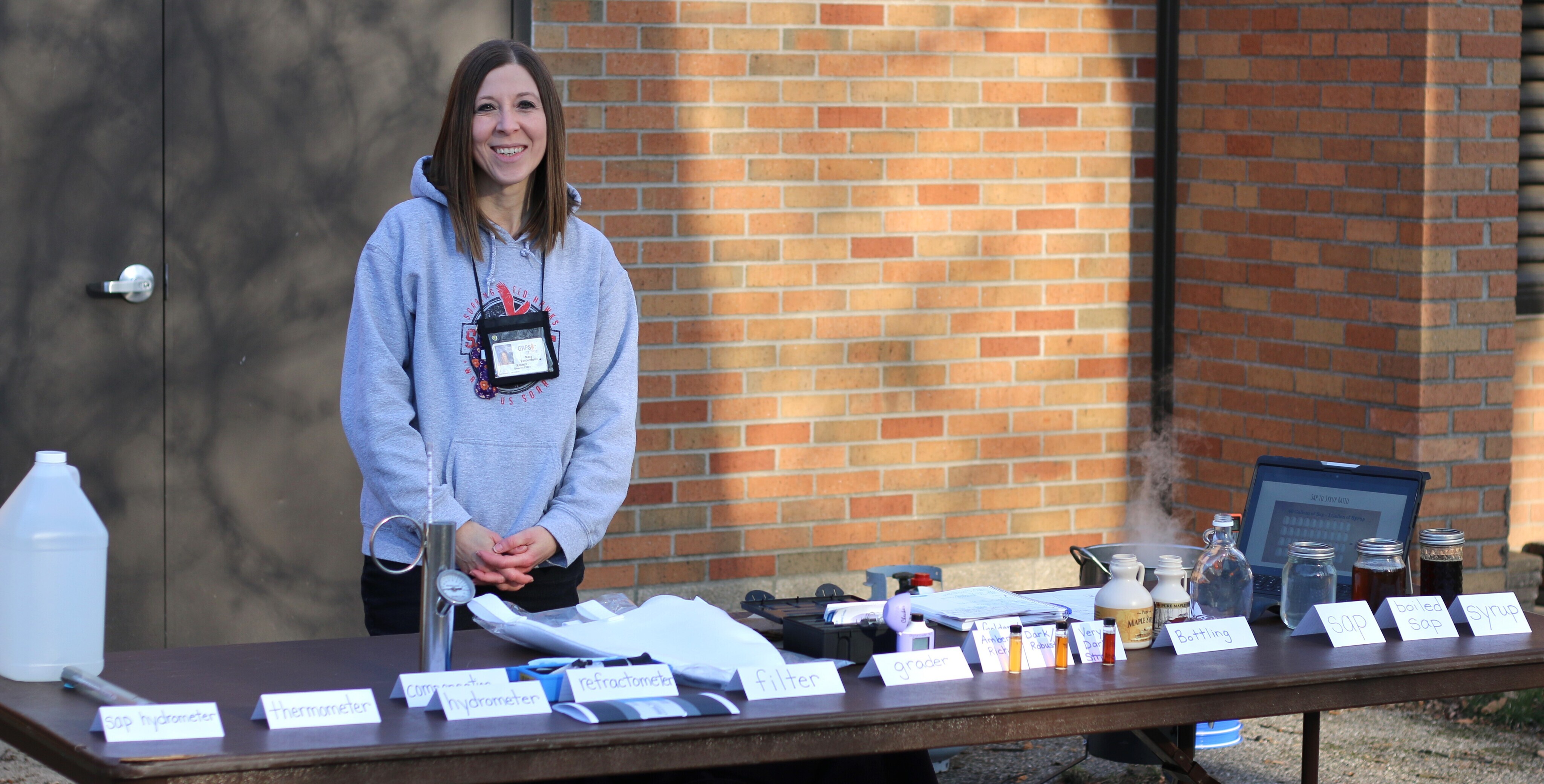 Click to see a larger version
Stacy VanderMolen at her outdoor classroom maple syrup station at Shawmut Hills
Skip to end of gallery
Skip to start of gallery
Click to see a larger version
Stacy VanderMolen at her outdoor classroom maple syrup station at Shawmut Hills
Skip to end of gallery
Skip to start of gallery
-
 Click to see a larger version
Adding sap as part of the boiling off process to create maple syrup
Skip to end of gallery
Skip to start of gallery
Click to see a larger version
Adding sap as part of the boiling off process to create maple syrup
Skip to end of gallery
Skip to start of gallery
-
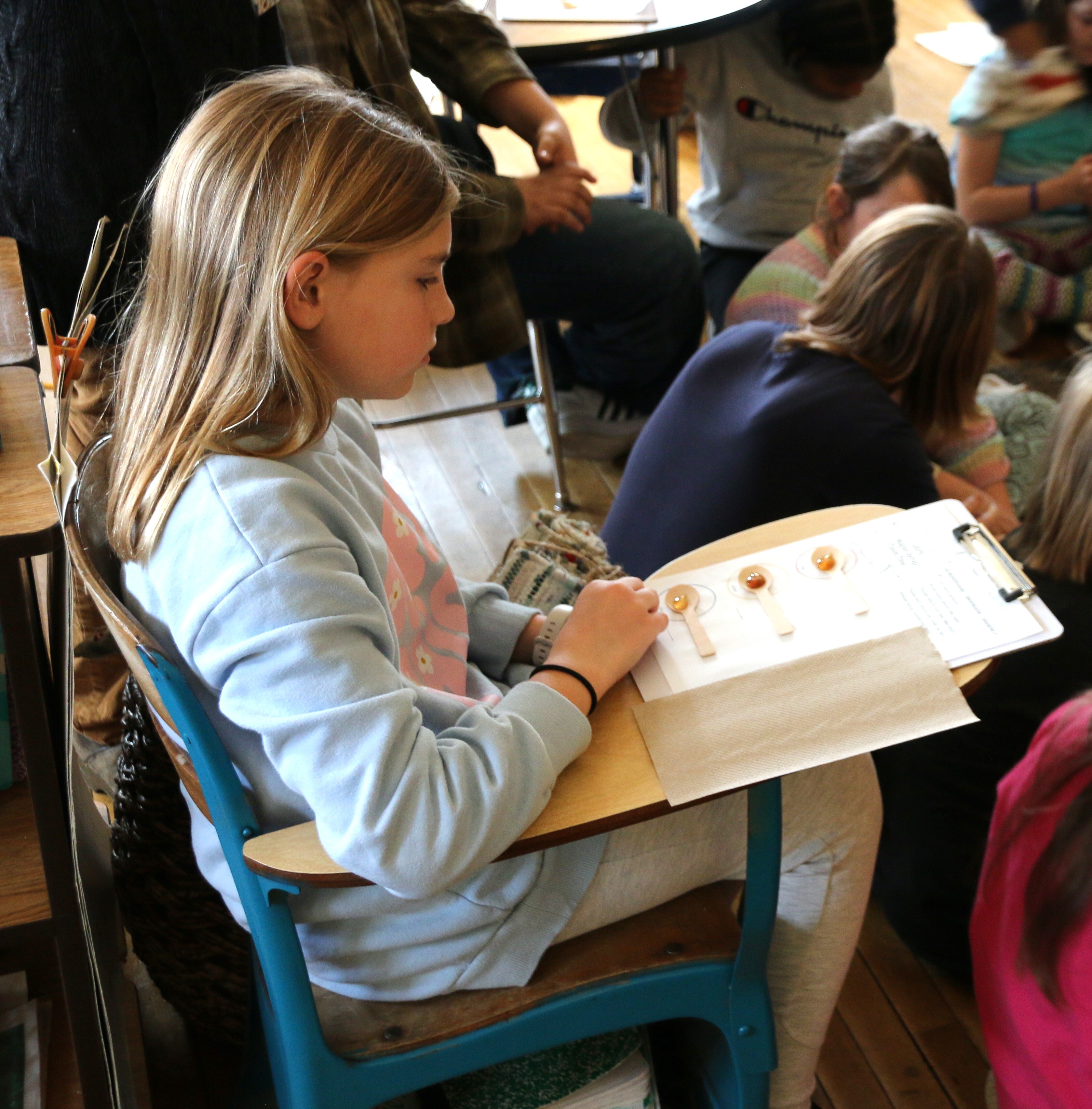 Click to see a larger version
Preparing to taste test at Grand Rapids Montessori
Skip to end of gallery
Skip to start of gallery
Click to see a larger version
Preparing to taste test at Grand Rapids Montessori
Skip to end of gallery
Skip to start of gallery
-
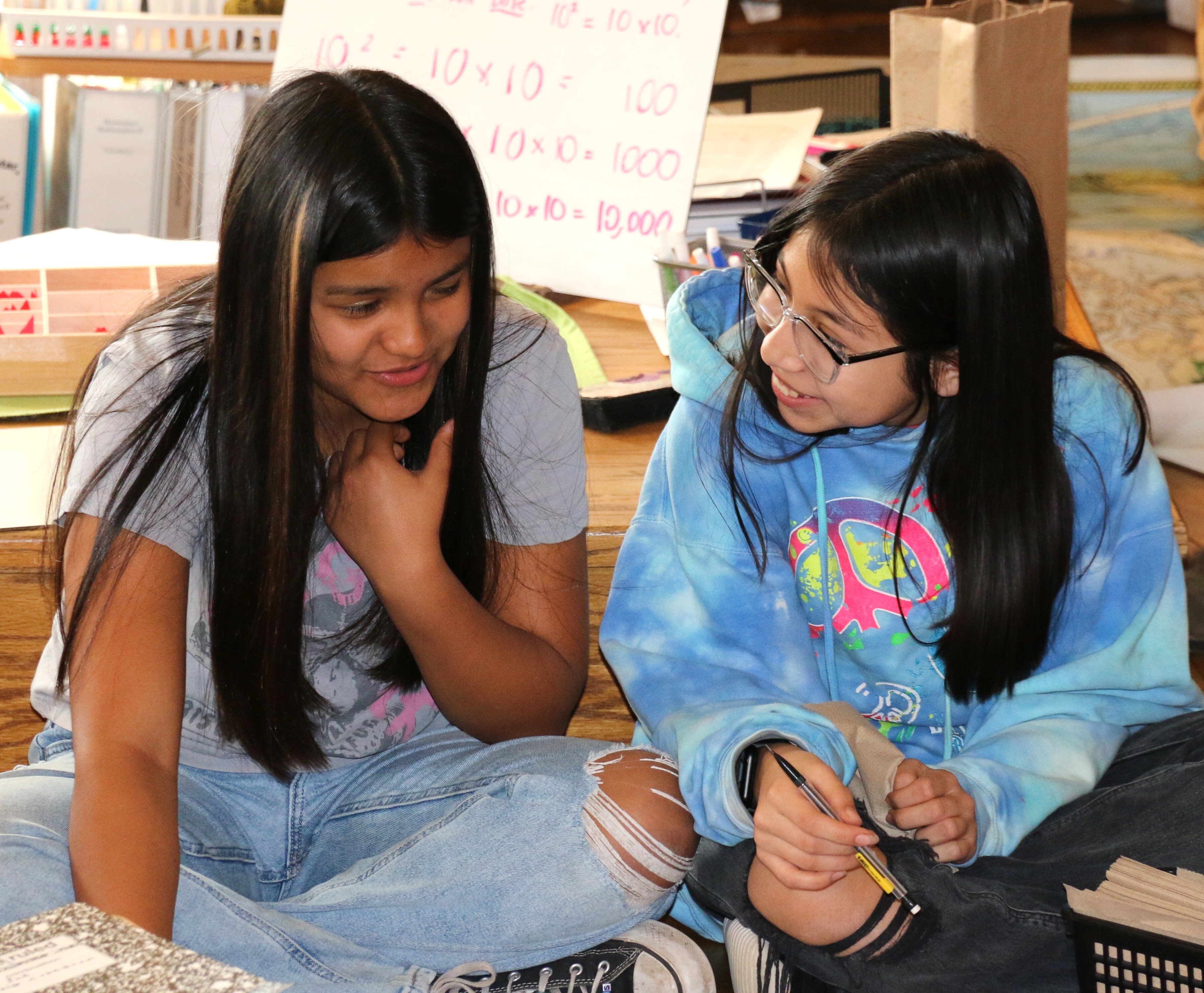 Click to see a larger version
Pondering their score during taste testing at Grand Rapids Montessori
Skip to end of gallery
Skip to start of gallery
Click to see a larger version
Pondering their score during taste testing at Grand Rapids Montessori
Skip to end of gallery
Skip to start of gallery
-
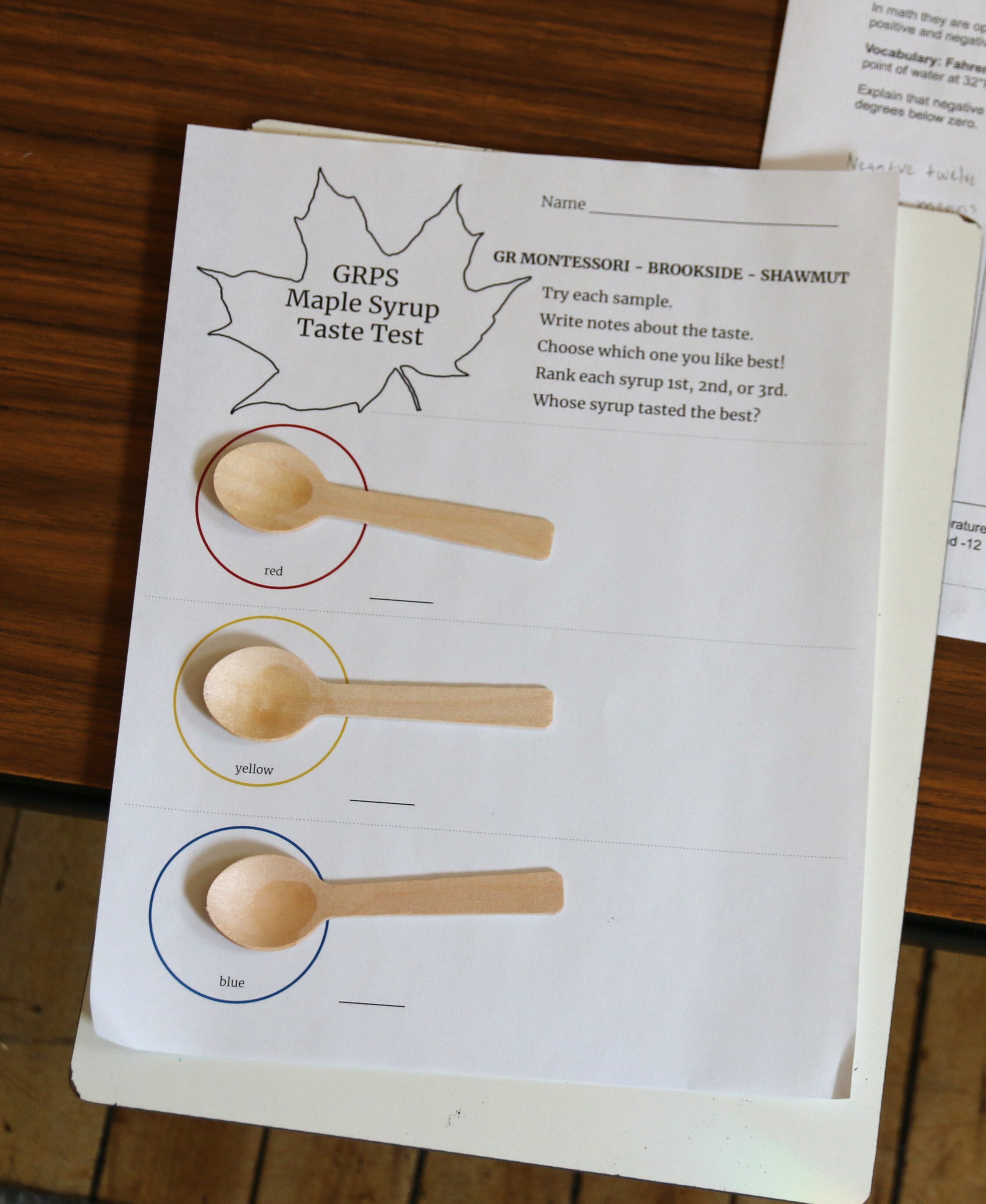 Click to see a larger version
Compostable spoons for maple syrup testing
Skip to end of gallery
Skip to start of gallery
Click to see a larger version
Compostable spoons for maple syrup testing
Skip to end of gallery
Skip to start of gallery
-
 Click to see a larger version
Grand Rapids Montessori teacher Michelle Holliday
Skip to end of gallery
Skip to start of gallery
Click to see a larger version
Grand Rapids Montessori teacher Michelle Holliday
Skip to end of gallery
Skip to start of gallery
-
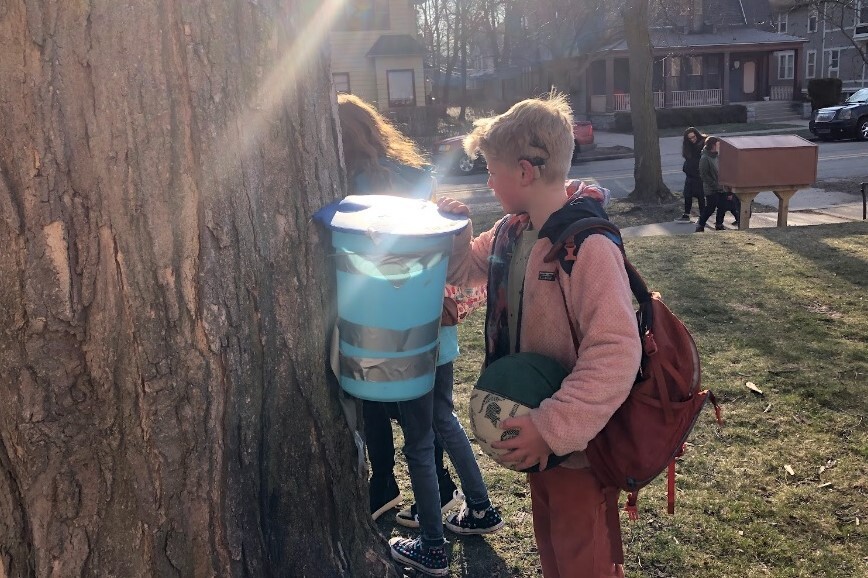 Click to see a larger version
The maple tree at Grand Rapids Montessori
Skip to end of gallery
Skip to start of gallery
Click to see a larger version
The maple tree at Grand Rapids Montessori
Skip to end of gallery
Skip to start of gallery
-
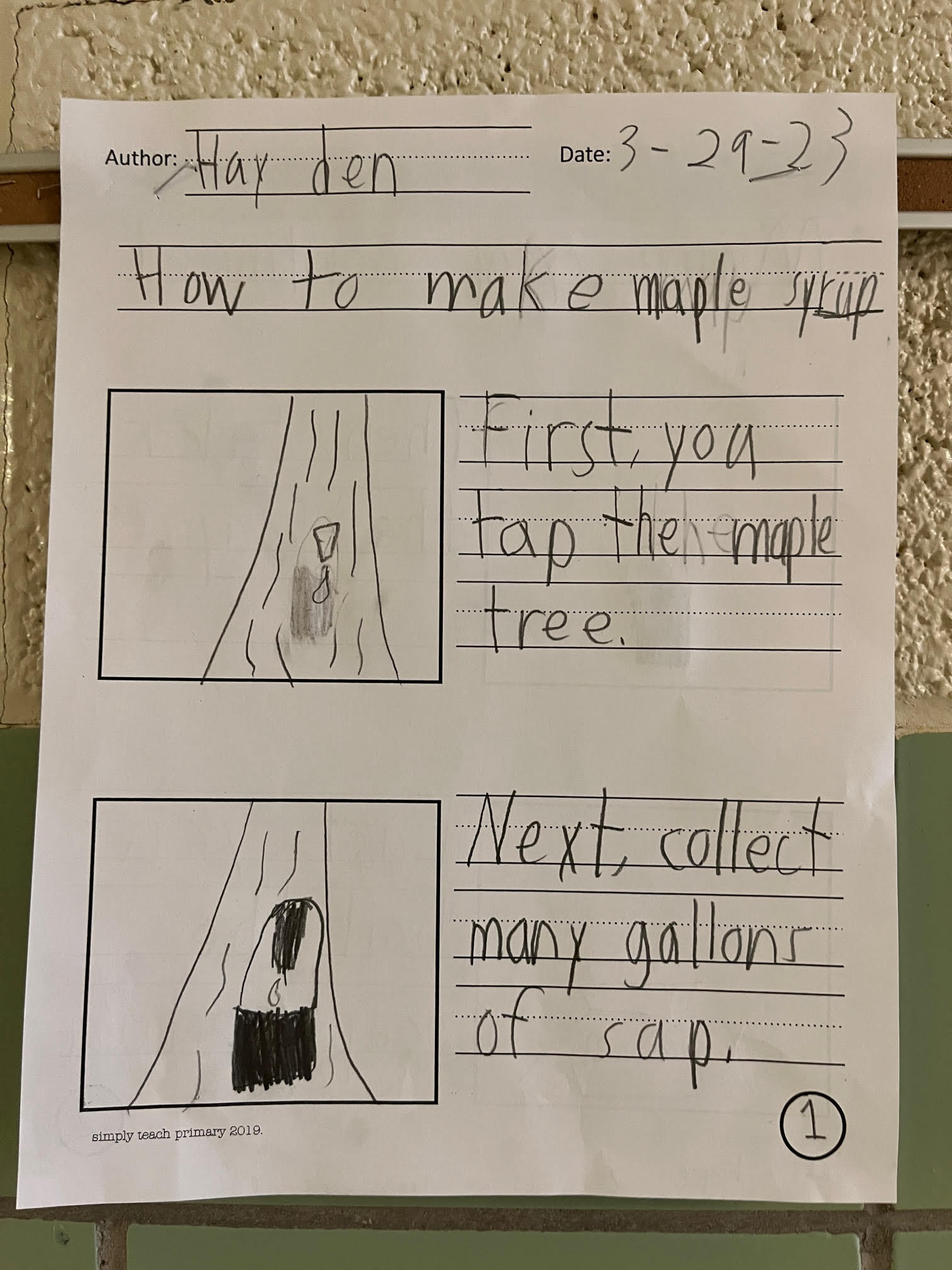 Click to see a larger version
A response sheet from a first-grade scholar at Brookside Elementary
Skip to end of gallery
Skip to start of gallery
Click to see a larger version
A response sheet from a first-grade scholar at Brookside Elementary
Skip to end of gallery
Skip to start of gallery
-
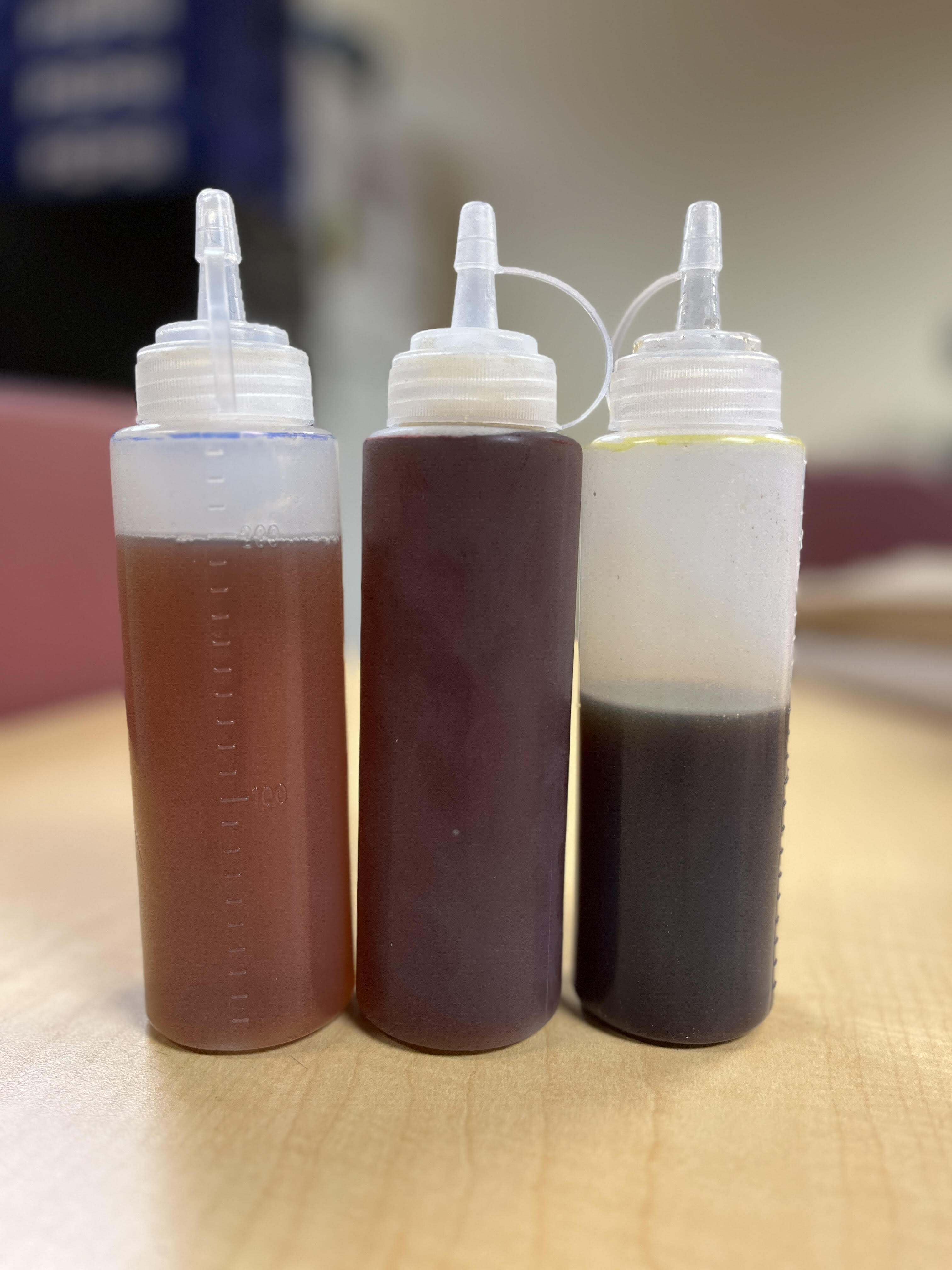 Click to see a larger version
Syrup from trees at Shawmut Hills, Grand Rapids Montessori and Brookside Elementary ready for taste testing
Skip to end of gallery
Skip to start of gallery
Click to see a larger version
Syrup from trees at Shawmut Hills, Grand Rapids Montessori and Brookside Elementary ready for taste testing
Skip to end of gallery
Skip to start of gallery
-
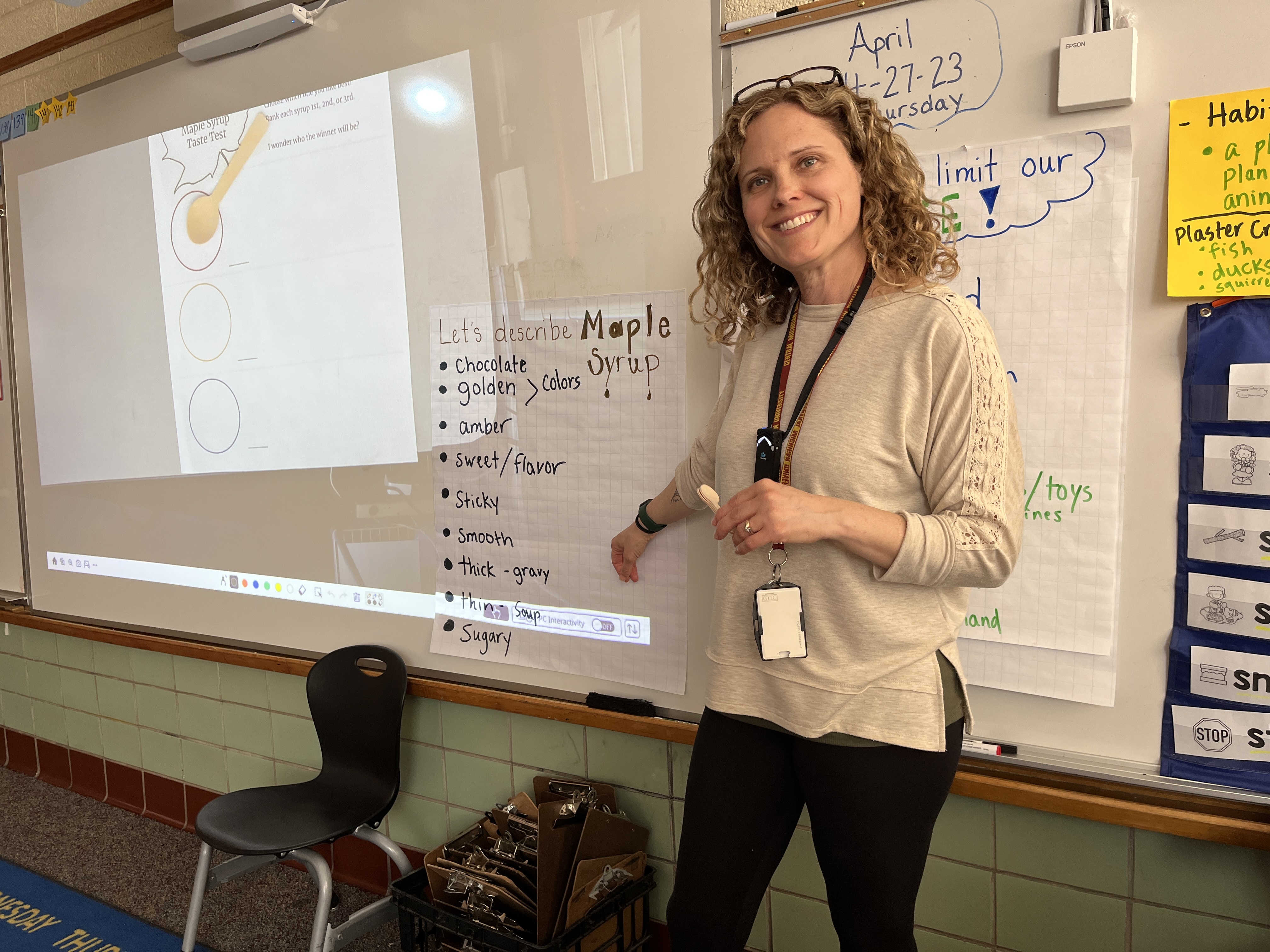 Click to see a larger version
Brookside Elementary teacher Erin Fettig
Skip to end of gallery
Skip to start of gallery
Click to see a larger version
Brookside Elementary teacher Erin Fettig
Skip to end of gallery
Skip to start of gallery
-
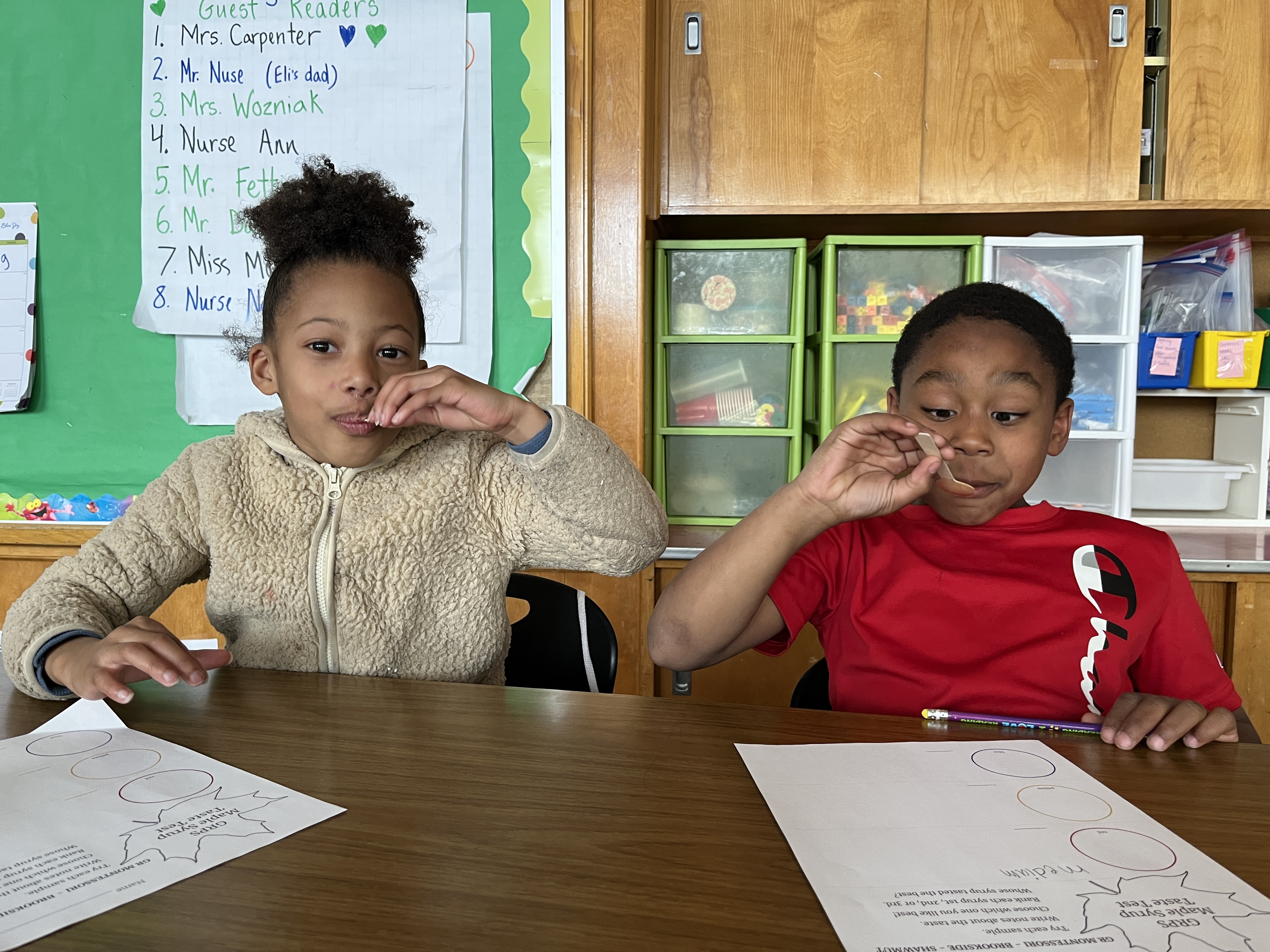 Click to see a larger version
Taste testing at Brookside
Skip to end of gallery
Skip to start of gallery
Click to see a larger version
Taste testing at Brookside
Skip to end of gallery
Skip to start of gallery
-
 Click to see a larger version
Taste testing at Brookside
Skip to end of gallery
Skip to start of gallery
Click to see a larger version
Taste testing at Brookside
Skip to end of gallery
Skip to start of gallery
-
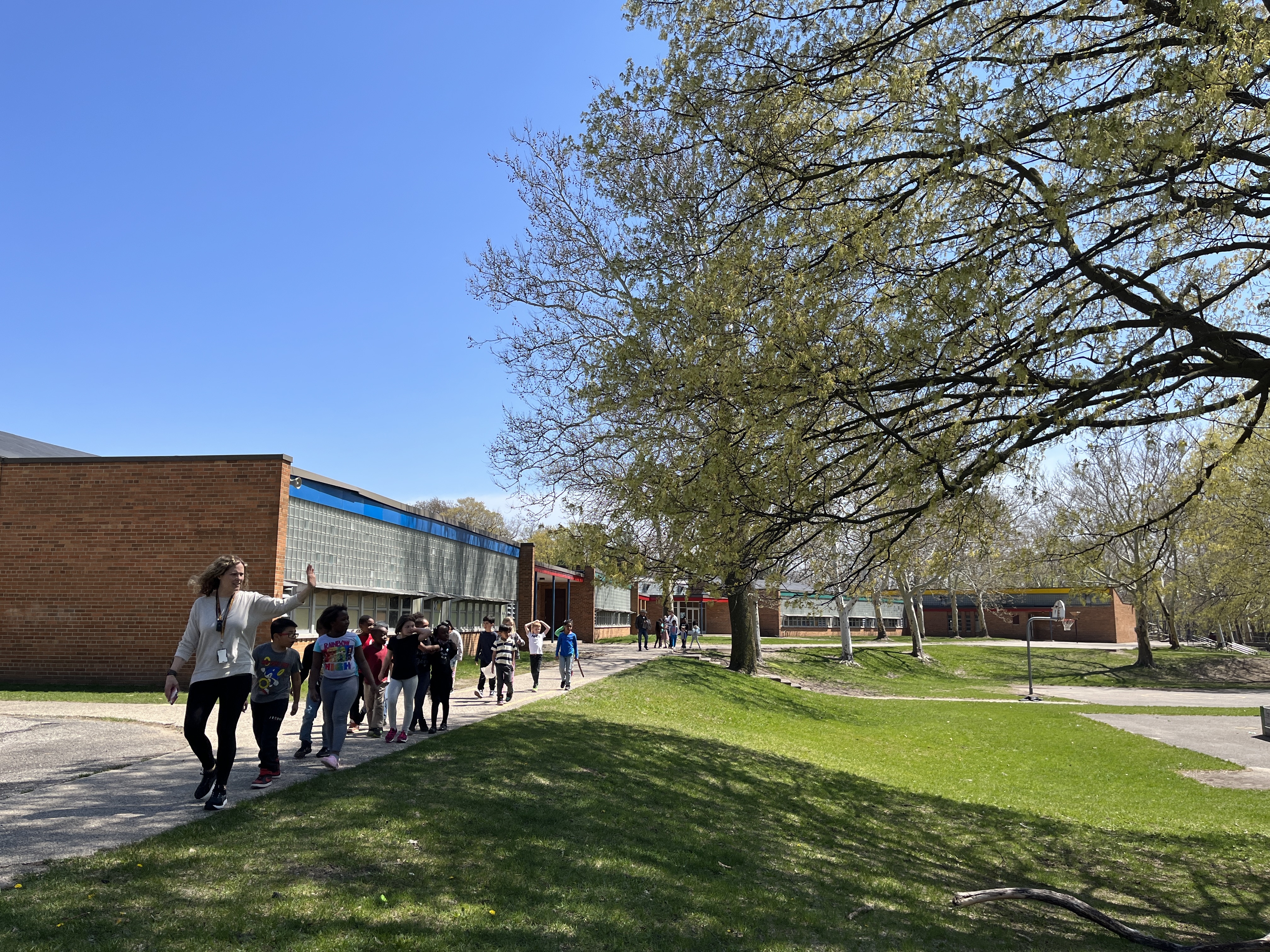 Click to see a larger version
Scholars thanking their tree at Brookside
Skip to end of gallery
Skip to start of gallery
Click to see a larger version
Scholars thanking their tree at Brookside
Skip to end of gallery
Skip to start of gallery






